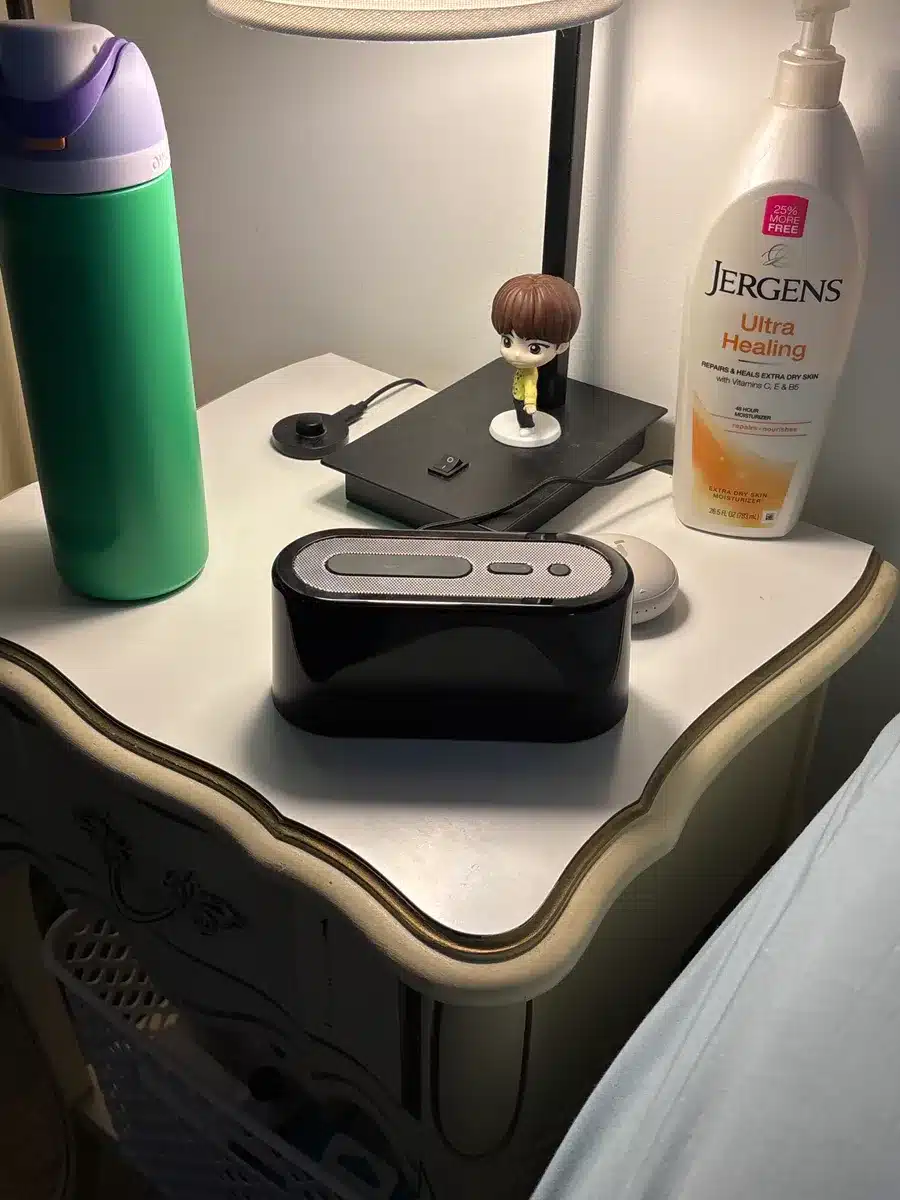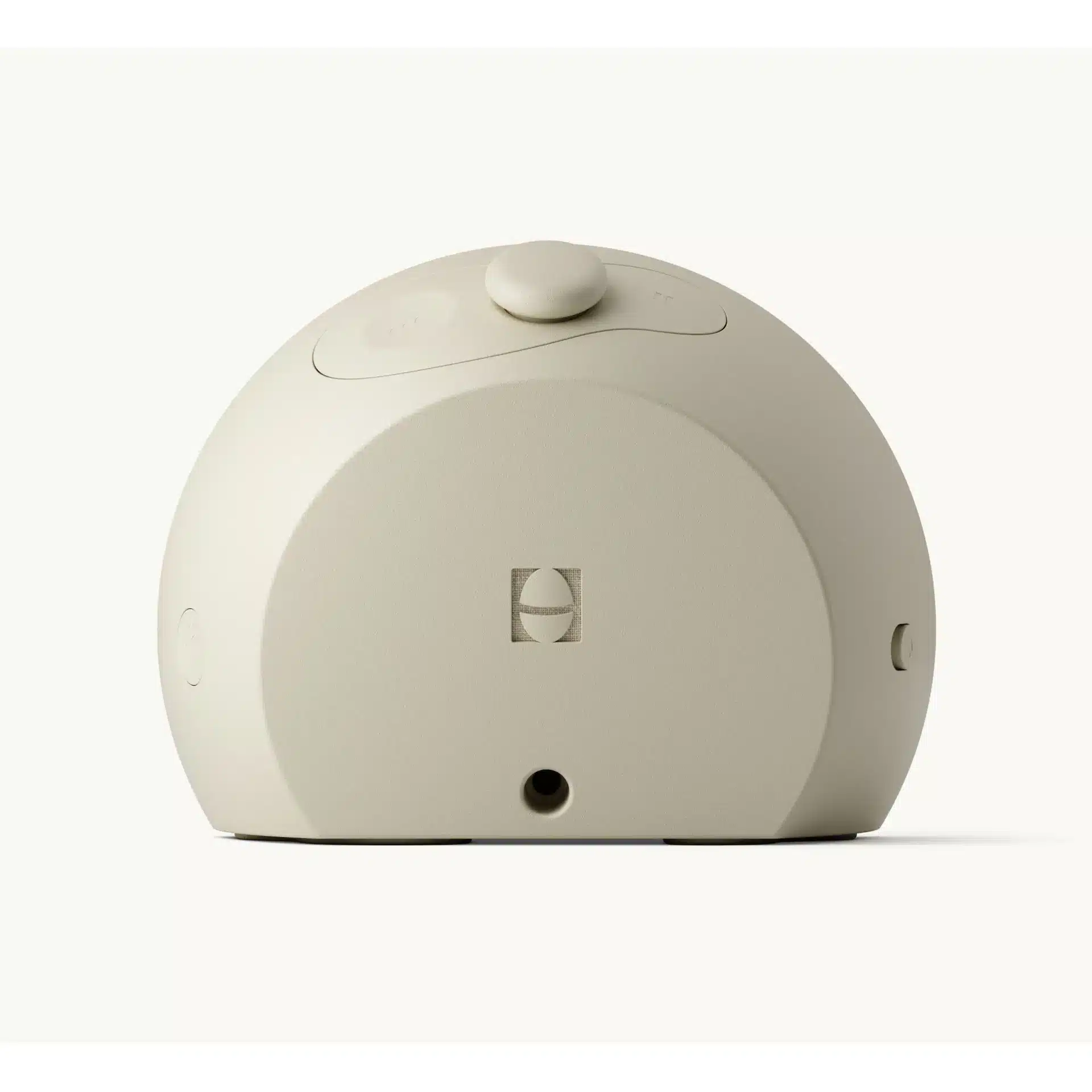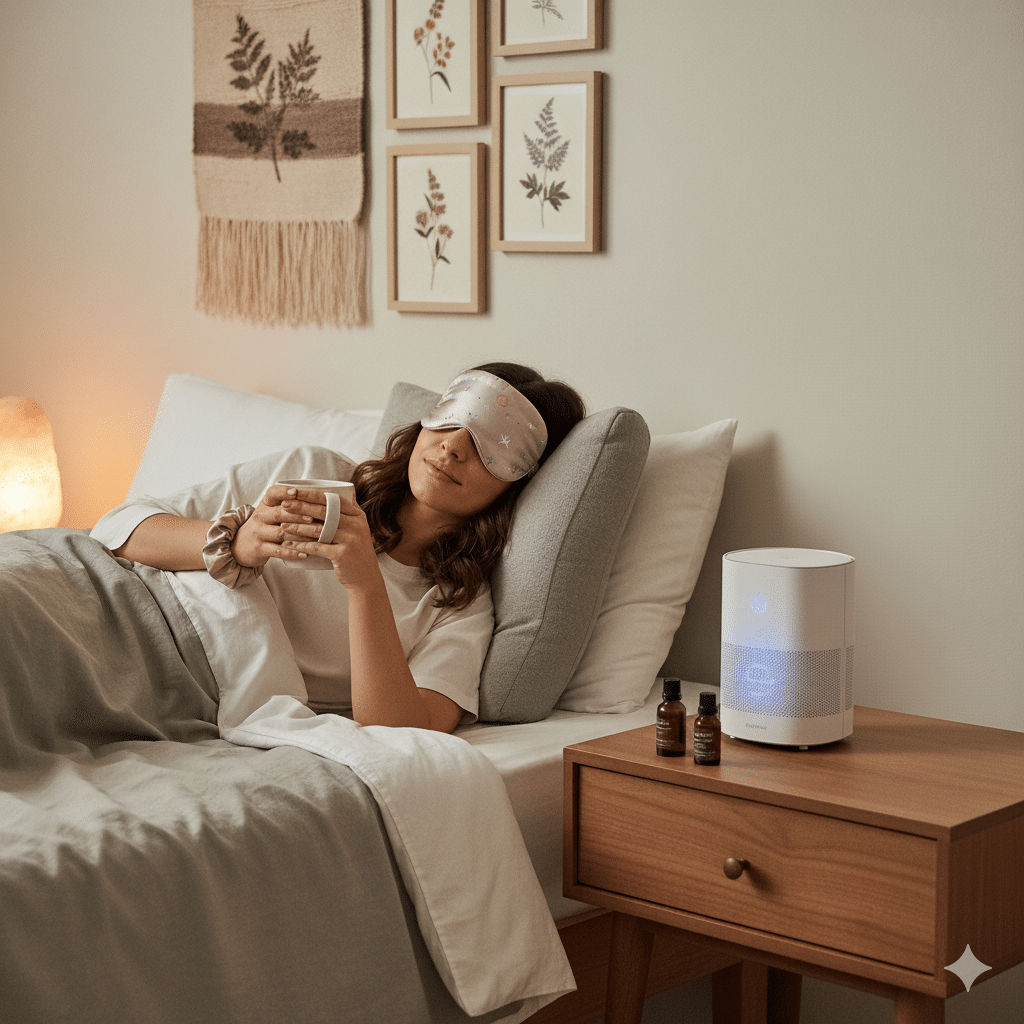Sound Machines — Benefits, Safety and Tips
Consistent soothing audio like white noise, pink noise, or nature tracks can smooth over disruptive sounds, lower stress, and help you drift into deeper, more restorative sleep. Here is a clean breakdown to get the most from a sound machine.
Improved Sleep Quality
Creates a calm stable soundscape that supports faster sleep onset and fewer mid-night awakenings, especially helpful if you are noise sensitive or live near traffic.
Lower Stress and Anxiety
Steady predictable audio helps quiet racing thoughts and promotes relaxation routines for bedtime or wind-down rituals.
Masks Unwanted Noise
Drowns out snoring, street noise, barking, or hallway sounds so your brain does not zoom in on every disturbance.
Focus and Flow
Use during work or study sessions to reduce distractions and improve concentration without lyrics or abrupt volume changes.
Tinnitus Relief
Gentle masking can make ringing less noticeable and intrusive, providing a more comfortable acoustic baseline.
Simple and Safe
Generally safe for most people. Keep volumes moderate and placement sensible for comfortable long-term use.
How to Use a Sound Machine (Yawnder best practices)
- Placement: Put the unit a few feet from your head, aimed away, to diffuse sound evenly.
- Volume: Set just loud enough to mask disruptions without straining your ears.
- Sound type: Try white, pink, or brown noise. Many people prefer pink noise for a softer, less hissy tone.
- Consistency: Let it run all night to avoid abrupt wake-ups when the audio stops.
- Routine: Start it during wind-down to train a sleep cue, lights dim, noise on, screens off.
- Health check: If you have hearing loss, tinnitus concerns, or a sleep disorder, talk with your clinician first.
If you notice headaches, ear fatigue, or next-day grogginess, lower volume, change sound profile, or take breaks. If symptoms persist, talk with your doctor.

Loftie Alarm Clock
A bedside alarm clock designed to support wind-down and gentler wake-ups. Ideal if you want an option that feels more like a sleep routine tool than a phone replacement.

Hatch Alarm Clock
A popular choice for gradual light-based wake-ups and bedtime routines. Great if you want a simple repeatable schedule with sound and light cues.
For the Bedroom
Pair with blackout shades and a cool room around 65 to 68 degrees. Use a timer only if you reliably sleep through outside noise after the first sleep cycle.
For Work and Study
Choose unobtrusive pink or brown noise at low volume. Avoid music with lyrics to minimize cognitive load during reading and writing.
Smart Lights — Set Your Sleep to “Easy Mode”
Smart bulbs can simulate sunrise/sunset, lower evening blue light, and build effortless bedtime routines—helping you fall asleep faster and wake more refreshed.
Circadian Support
Schedule a gentle “sunrise” in the morning and a slow “sunset” at night to align your body clock and make bedtimes/wake-ups feel natural.
Less Evening Blue Light
Shift bulbs to warmer color temps after dusk to reduce melatonin suppression and promote sleepiness without sacrificing visibility.
Hands-Free Control
Use your phone or voice assistant from bed—no getting up to flip switches, no bright shocks of light that can fully wake you.
Relaxing Routines
Create bedtime scenes that dim gradually, add amber tones, and pair with calming audio for a consistent wind-down ritual.
Bedroom to Whole Home
Start in the bedroom, then expand to hallways and bathrooms with low-lux night paths to avoid glare during late-night trips.
Travel-Proof Habits
Keep routines running even when you’re away—automations maintain rhythm and add a bit of home security peace of mind.
Yawnder Tips to Dial In Your Lighting
- Evening preset: 2–3 hours before bed, dim to 20–40% and shift to warm (≤2700K). Avoid cool “daylight” tones at night.
- Sunrise alarm: Schedule a 20–30 minute brighten starting ~30 minutes before wake time for a gentle lift without blaring alarms.
- No glare at night: Enable ultra-low night lights (5–10%) in hallways/bathroom to navigate without fully waking.
- Bundle routines: Pair lights with Do Not Disturb, sound machine, and thermostat tweaks for a one-tap bedtime scene.
- Bedrooms first: Prioritize bedside lamps and overheads. Add smart switches if you don’t want to replace every bulb.
- Consistency > intensity: Small, predictable changes nightly are more effective than sporadic “perfect” setups.
If you’re especially light-sensitive, consider red/amber night modes and avoid screens 60–90 minutes before bed.
Bedtime Routine (30–60 min)
Lights fade from 40% → 20% and shift to warm amber; hallway/bath to 10%; pair with white noise and phone to DND.
Sunrise Wake (20–30 min)
Gradual brighten from 1% → 60% with warm → neutral color temp; optional gentle audio. Helps you wake without a jolt.

